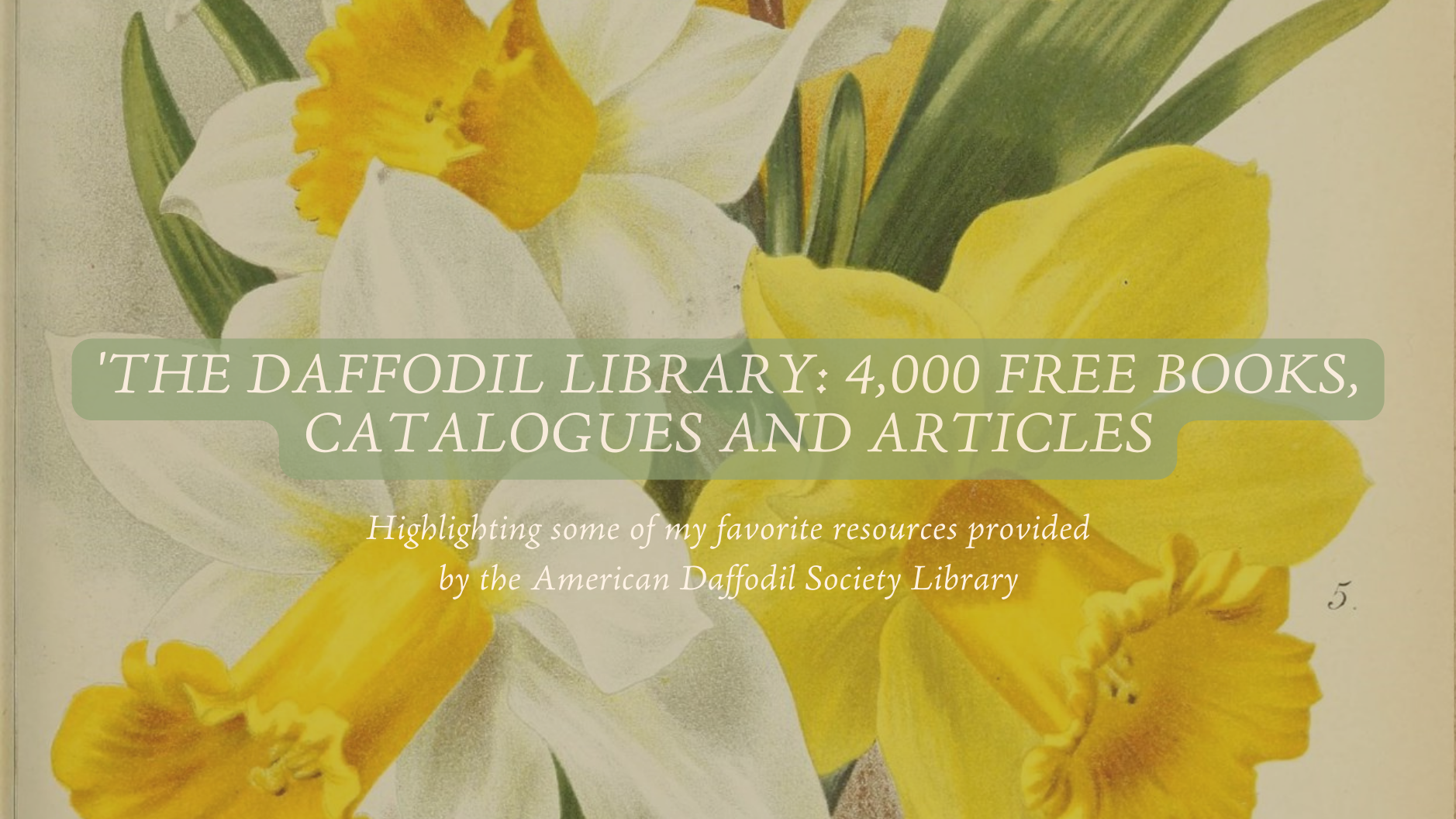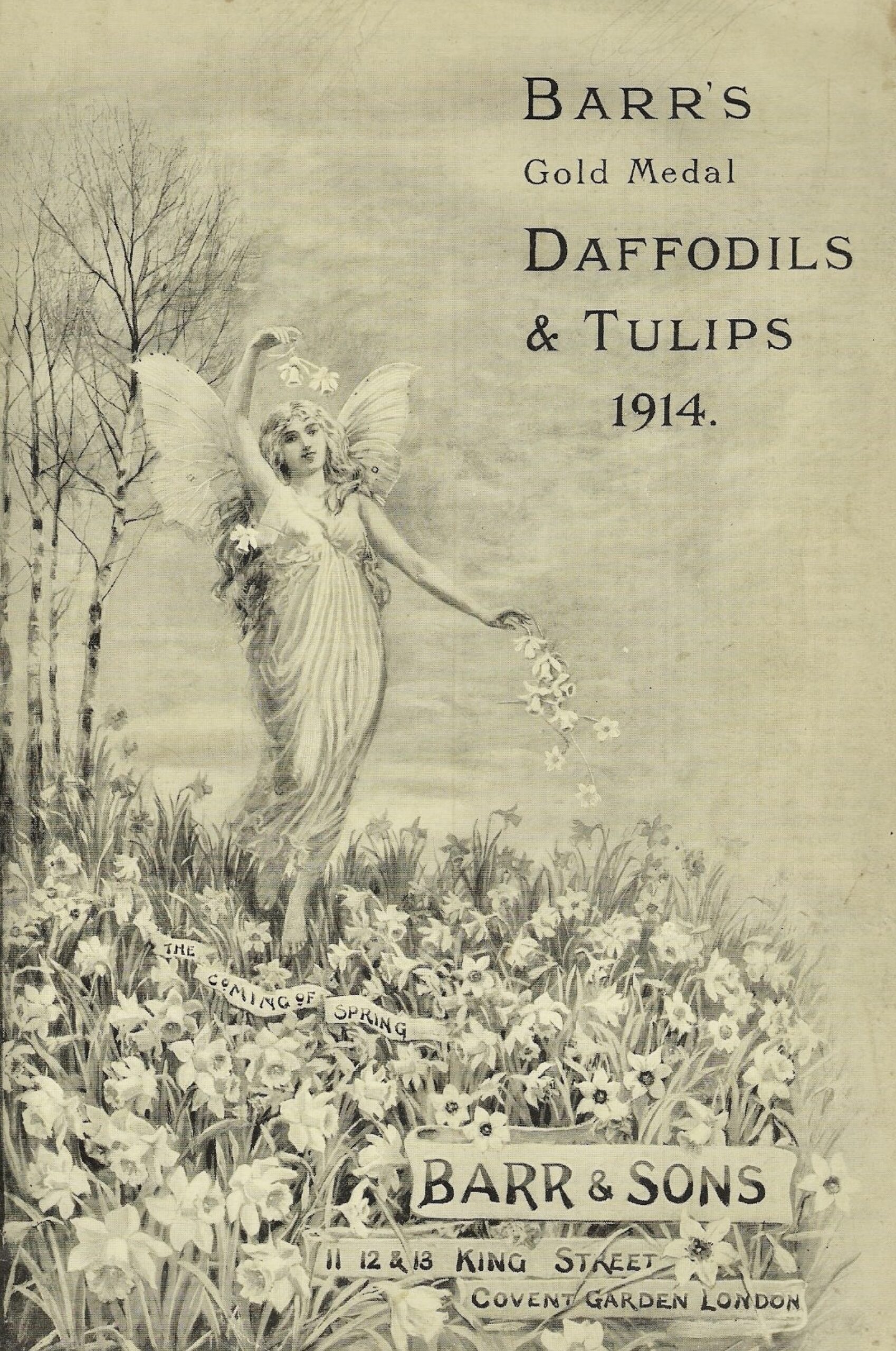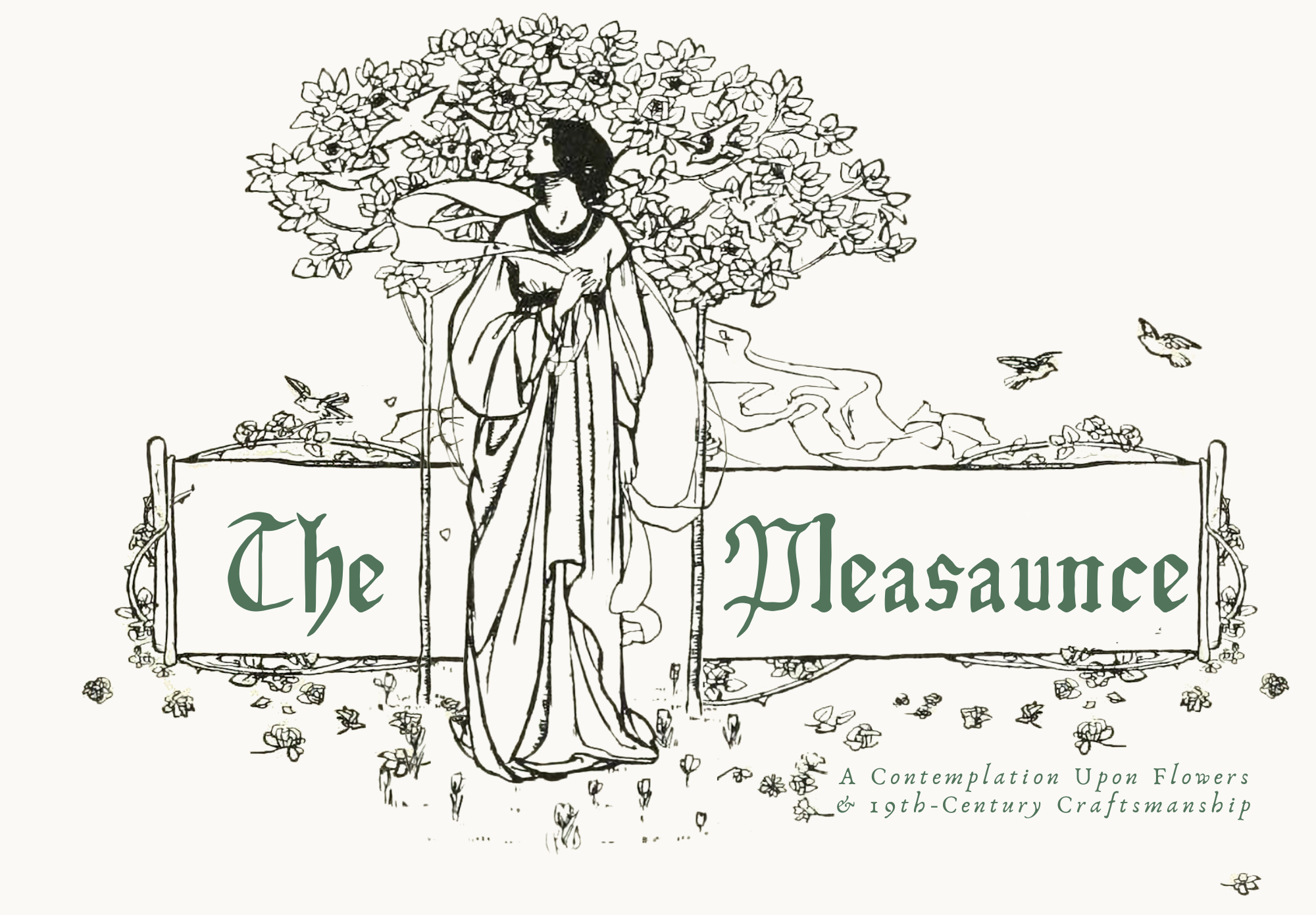
The American Daffodil Society Library offers over 4,000 publications, articles, and catalogs related to daffodils, including catalogs dating back to the 1800s, scientific articles, and information on species daffodils growing in their native habitats. Additionally, they have included their Daffodil Journal publications from 1964 to 2016!
With information dating back to the 1500s, the historic publication section of the library is proving to be very useful for those interested in forming a historic daffodil collection.
The first recommendation has to be Ye Narcissus or Daffodyl Flowre, and hys Roots (1884), a list of 361 daffodil varieties complied by Peter Barr while on his search for lost varieties. Since I am interested in the unknown and forgotten plants, this book made me curious in learning more about Peter Barr. This research will have to be for a separate blog post, but I will share that Barr, also known as ‘The Daffodil King,’ is credited with the success in bringing back the popularity of the daffodil in British gardens! For further information on his importance in British gardening history, I highly recommend also reading Bob Davenport’s blog Studied Monuments and the The Garden Trust‘s post on “the unsung daffodil hero.”

Addisonia; Colored Illustrations and Popular Descriptions of Plants by New York Botanical Garden (1916). Internet Archive
“The Daffodil of Shakespeare is the wild daffodil (Narcissus Pseudo-Narcissus) that is found in abundance in many parts of England. This is the true English Daffodil, and there is only one other species that is truly native—the N. biflorus, chiefly found in Devonshire. Alt long before Shakespeare’s time a vast number had been introduced from different parts of Europe, so that Gerard was able to describe twenty-four different species, and had “them all and every of them in our London gardens in great abundance.”
Peter Barr (1884)

PDF Link to Barr, Ye Narcissus or Daffodyl Flowre, and hys roots, 1884
My second recommendation from the historical publications section is The ‘King Alfred’ Daffodil Story by Rose Brady (1999), which highlights a brief history of this sought-after variety and its humble beginnings. Despite its historical connection to the 9th-century Anglo-Saxon ruler King Alfred the Great, the origins of this daffodil trace back to a small Devon village called Newton Poppleford in 1890, when a former London lawyer named John Kendall cross-pollinated ‘Emperor’ (Backhouse, W., pre-1865) and Narcissus hispanicus ‘Maximus’ (before 1576).
While this variety is commonly known among American gardeners, what many of us are actually growing are improved hybrids like “Dutch Master, Rijnveld’s Early Sensation, Marieke, or Golden Harvest” (Colorblends.com), rather than the true King Alfred variety. One of the few growers who cultivate the true King Alfred daffodil is Dutch grower Eric Breed of BreedBulbs, known for preserving old varieties of daffodils and tulips. This video by the renowned US bulb producer, Colorblends, sheds light on this Myth of the King Alfred daffodil:
PDF Link to The ‘King Alfred’ Daffodil Story by Rose Brady, 1999
I hope to highlight more insightful resources provided by the American Daffodil Society in the near future!
Further Reading


